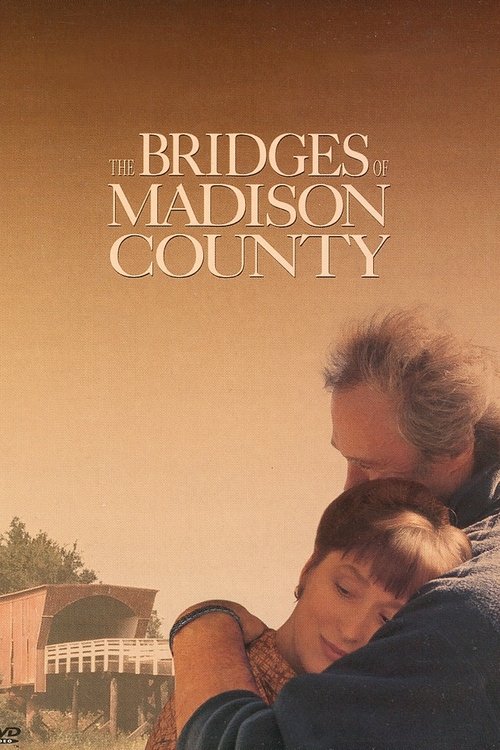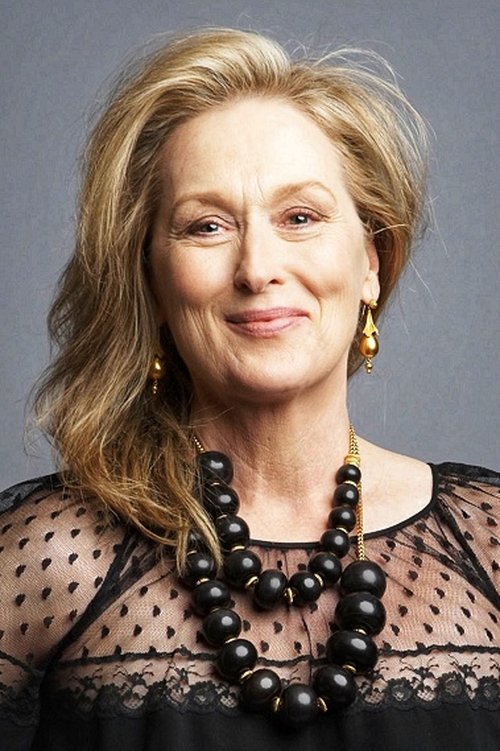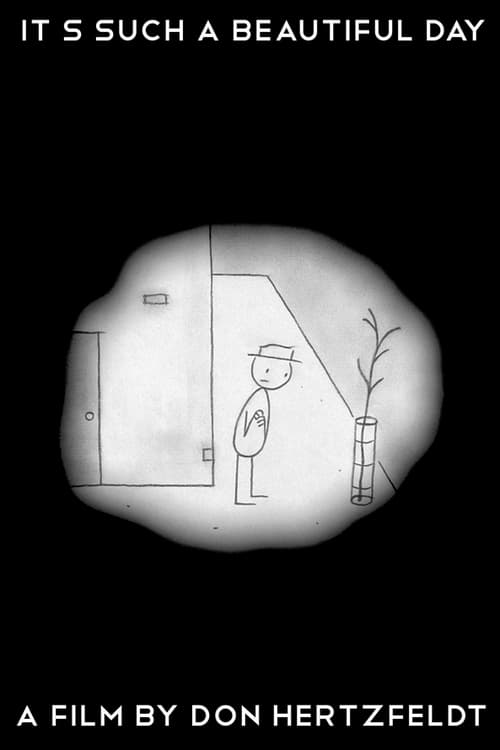
The Bridges of Madison County
Photographer Robert Kincaid wanders into the life of housewife Francesca Johnson for four days in the 1960s.
Dialogues from Movie The Bridges of Madison County
Quotes from Movie The Bridges of Madison County
Sound Tracks from The Bridges of Madison County by Patrick Doyle
Somewhere Only We Know
Somewhere Only We Know by Keane, Featured in a key romantic moment between the main characters.
The Best Is Yet to Come
The Best Is Yet to Come by Frank Sinatra, Played during a nostalgic scene reflecting on love.
Always on My Mind
Always on My Mind by Willie Nelson, Accompanies a pivotal emotional scene.
Download App
Memorable Scenes from Movie The Bridges of Madison County
The Arrival
As Robert Kincaid drives into Madison County with the sun setting behind him, the music swells, and the atmosphere is filled with potential and nostalgia. We see Francesca, waiting at home. The sense of longing in her demeanor is palpable as she yearns for something more than her everyday life.
Context: This moment sets the stage for the unfolding romance and hints at the deep emotional struggles Francesca faces.
The First Meeting
Francesca meets Robert by chance when he asks for directions to a bridge. Their initial awkwardness quickly turns into a warm exchange filled with subtle glances and soft smiles, as an emotional connection begins to form.
Context: This scene marks the beginning of a deep, transformative relationship between Francesca and Robert.
The Photo Session
Robert invites Francesca to assist him in taking photographs at the covered bridge. The gentle breeze, the rustling leaves, and the intimate setting make it feel like a fairy tale moment. Here, you can see Francesca blossom as she appreciates life through Robert's artistic eyes.
Context: This scene illustrates how Robert brings out a side of Francesca that she has suppressed for years.
The Confession
Over a glass of wine, Robert reveals his past, sharing his love for photography and how it defines him. Francesca listens intently, and it’s clear she sees in Robert a reflection of the life she longs for. Their hearts seem to connect in this pivotal moment.
Context: This confession deepens their bond and makes the audience aware of what they each lack in their lives.
The Kiss
As the romantic tension peaks, they share a passionate kiss in the dim light of Francesca's home. This moment is charged with emotion—it's joyful, nostalgic, and heartbreaking all at once, as they surrender to their feelings despite knowing the consequences.
Context: This is the turning point of their relationship, marking the shift from friendship to deep romantic affection.
The Choice
Francesca stands in her kitchen, torn between her family responsibilities and her love for Robert. She rings her husband, only to find herself hesitating as she pictures a life with Robert. This moment is heavy with indecision and the weight of her choices.
Context: This scene captures the internal conflict Francesca faces between duty and desire.
The Storm
The weather outside grows fierce, mirroring the emotional storm within Francesca as she and Robert share a quiet moment on the porch. The tension escalates, showcasing their urgency to seize this fleeting time together.
Context: This metaphorical storm emphasizes the volatility of their situation and the fleeting nature of their romance.
The Last Night
Their final night together unfolds with tenderness and sorrow. They talk about the future, acknowledging the time they have shared but also the reality pulling them apart. The atmosphere is bittersweet, filled with the knowledge that this love must end.
Context: This scene encapsulates the essence of fleeting love and the longing for what could have been.
The Drive to the Bridge
Francesca drives Robert to the bridge one last time, the silence heavy between them. The car ride is filled with unsaid words and emotions, leaving viewers aching for them as they approach their inevitable separation.
Context: Their journey to the bridge symbolizes the physical and emotional distance they will soon face.
The Goodbye
At the bridge, they share a tearful goodbye. Francesca promises to remember him while Robert reassures her that their love was real. Their heartbreak is palpable, and the emotional weight of this farewell is overwhelming.
Context: This moment marks the end of their passionate affair while highlighting the profound love they found in each other.
Returning Home
Francesca returns home after saying goodbye, her face a mixture of joy and sadness. She embraces her children, but the void of Robert's absence looms large, creating a stark contrast to her once-busy life.
Context: Here, we see the fallout of her choices and the lingering impact of their romance on her day-to-day existence.
The Box of Memories
In the present day, Francesca’s children discover a box of photographs and letters from Robert after her passing. Their shock and realization of her secret love story ignite feelings of curiosity, admiration, and even a hint of jealousy.
Context: This discovery serves as a powerful reminder of the life Francesca lived, filled with love, loss, and hidden desires.
The Reflection
Francesca stands at the bridge years later, reflecting on her past. Memories flood back, and a bittersweet smile breaks on her face. The connection to Robert is still alive in her heart, emphasizing the impact of their love.
Context: This moment signifies the enduring nature of true love, showing how it shapes us even after we've said goodbye.
The Last Photo
The final image in the film shows a photograph of Francesca and Robert together, capturing the essence of their love in a single frame. It's a lasting testament to what they shared, evoking nostalgia.
Context: This serves as a poignant closing image that encapsulates the film's themes of love, memory, and sacrifice.
The Family Reaction
Francesca's children discuss her past and how it challenges their understanding of her as a mother. Their emotions shift between pride, surprise, and sadness as they realize the depth and complexity of her life.
Context: This conversation underscores how our understanding of loved ones is often multi-layered and how hidden stories shape our relationships.
The License Plate
As Robert drives away for the final time, the camera focuses on his license plate. It serves as a metaphor for his transient nature in Francesca's life—something beautiful, but ultimately short-lived.
Context: This detail adds a layer of profundity, highlighting the impermanent yet significant impact of Robert's presence in Francesca's life.
The Letter Reveal
In a quiet moment, Francesca reads aloud one of Robert's letters, filled with emotion and longing. The words echo with the depth of their connection and the love that transcends time and distance.
Context: This scene lays bare Francesca's true feelings and showcases the emotional weight of their bond.
The Cooking Scene
Francesca cooks a meal for Robert, her movements filled with affection and care. This scene signifies her connection to him and how cooking becomes an act of love, enriching the emotional layers of their relationship.
Context: Through this scene, we see the nurturing aspect of Francesca’s character and how love permeates every action she takes.
The Dream Sequence
Francesca dreams about a life with Robert, filled with laughter and joy. The dream contrasts sharply with her reality, stirring deep emotions within her as she wakes up in her empty bed.
Context: This dream sequence serves to illustrate Francesca’s deepest desires and how far they drift from her current life.
The Arrival of the Family
When Francesca’s family arrives back home, the laughter and noise contrast with the quiet moments she shared with Robert. Her internal struggle becomes evident as she puts on a brave face.
Context: This moment represents the clash between Francesca’s duties as a wife and mother and her yearning for passion and connection.
The Conversation at the Dinner Table
Francesca sits at dinner with her family, visibly distracted. The weight of her emotions is evident, as she smiles while lost in thoughts of Robert, highlighting her internal conflict.
Context: This scene showcases how our inner desires can clash with societal expectations and family obligations.
The Search for the Bridge
Robert searches for the bridge only to find that it represents a piece of Francesca's heart that he can’t fully reclaim. The scenery is stunning, yet it also feels hauntingly empty without her.
Context: This illustrates Robert’s understanding of the impact Francesca has had on his life, highlighting the lengths they both went for love.
The Closure
Francesca speaks to her children about her past, finally accepting her decisions and the woman she has become. Her voice trembles with emotion, showcasing her growth and understanding.
Context: This moment highlights the importance of self-acceptance and understanding the complexities of love.
The Last Goodbye
As Francesca reaches for Robert’s hand one final time, the camera captures their love in a single, lingering shot. There’s a silence filled with promise, regret, and hope encapsulated in their expressions.
Context: This powerful closure reflects the film's emphasis on cherishing moments of love, even when they are fleeting.
Download App







